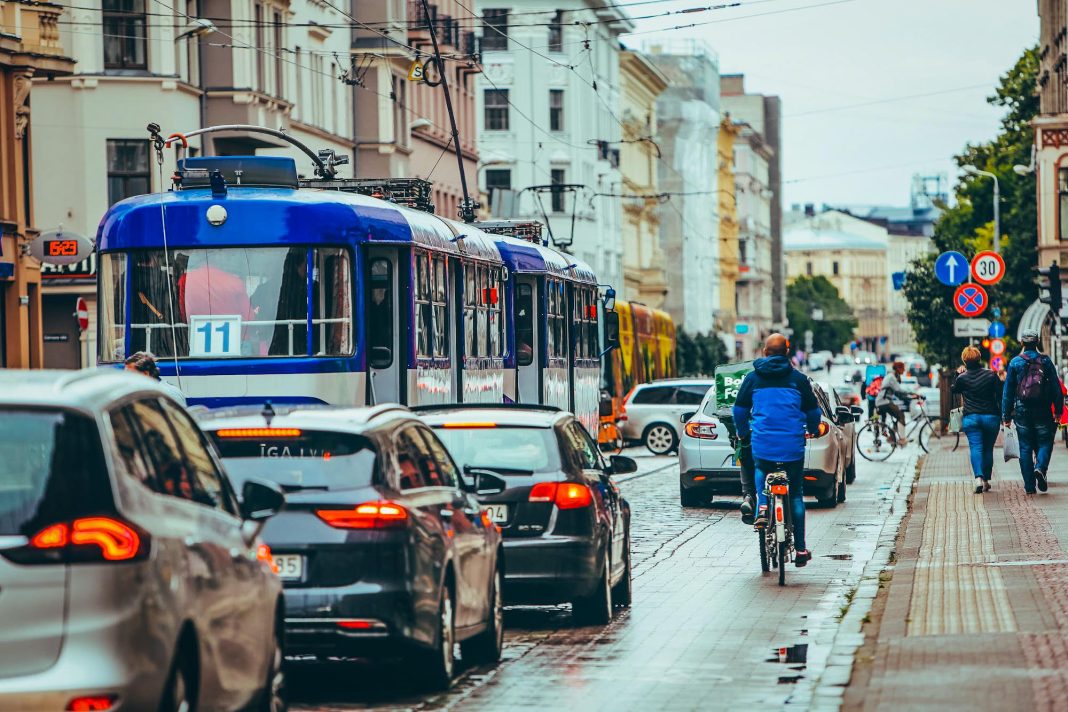Creating a cycling city is no easy ride. Here’s everything you should know from the outset, all brought to life by people we’ve spoken to who deal with cycling every day.
Whilst no city is the same, there are a few challenges even the champion cycling cities struggled with. Thankfully though, once these sticking points are known, cities can start pedalling forward and get their wheels rolling.
Challenge (1): Which Comes First?
If very few people cycle, a city may see no need to invest in cycling infrastructure. The catch, however, is that the lack of infrastructure may be the reason why few people cycle. As Steward Midwinter, a cycling advocate for Bike Calgary put it, “it’s difficult to gauge the demand for a bridge by counting the number of swimmers in the river.”
The first challenge is therefore to convey this ‘chicken and the egg’ dilemma and grapple with the mantra of ‘build and they will come.’
Challenge (2): To Separate, or Integrate?
Once a city begins creating cycling infrastructure, the next challenge is determining what type.
“There’s a very big, even philosophical, discussion,” says Lucas Harms, Managing Director at the Dutch Cycling Embassy, “about whether you should focus on separate cycling infrastructure or whether you should have it as part of the general infrastructure.”
Under a ‘separated’ approach, cycling is treated as an independent form of transport with a dedicated network, usually through protected cycle lanes. By contrast, the ‘integrated’ approach regards the bicycle as an equal road user to the car and encourages travel on the city’s existing infrastructure through traffic calming measures and shared spaces.
Despite the distinction, often cities mix both. For example, almost 80% of all urban roads in the Netherlands have traffic calming measures, with only the major busy roads featuring separated lanes. It may therefore remain as a more philosophical, rather than practical, debate.
Challenge (3): Not Enough Space
Cycle routes, bike parking and cycle highways all take up space. Finding room in dense city centres can be a challenge – especially when it is seen as stealing space from cars or squeezing sidewalks.
Despite this common objection, bicycles do not actually take up much room. Swapping on street parking for cycle routes is often enough: Seville replaced 5000 carparking spots with 80km of bicycle routes.
The real challenge is not finding the space, but the political will to make change. As Ursula Wyss, the politician heading Bern’s Velo Offensive told us, “there’s no such thing as ‘we have no space for a bicycle infrastructure’. It’s just a matter of changing the paradigm and reallocating the existing space.”
Challenge (4): It’s People Who Cycle, Not Cyclists
‘Build and they will come’ is only true to some extent. “A big challenge is always transforming cycling from a sporting activity for middle aged men in lycra, to a reliable transport mode for all ages and abilities,” says Lucas Harms.
Campaigning is therefore needed to shift the stereotypes. Since obstacles to cycling varying among demographics – women tend to focus on safety, whilst commuters fear time loss – campaigns need to be tailored. The challenge is to deliver targeted and effective messages, all of which show that you do not need to be cyclist to cycle.
Challenge (5): Feeling Safe Is Different From Being Safe
Although the probability of an accident through dooring (cycling into an opening car door) is statistically higher than being hit by moving traffic, people feel safer cycling next to parked cars.
This is the difference between objective and subjective safety – feeling safe is not synonymous with being safer. “Most rules and regulations only recognise objective safety,” says Isabell Eberlein, cycling expert for Velokonzept, “but subjective safety is crucial – if you ask vulnerable groups why they don’t cycle, it’s always a matter of subjective safety.”
A challenge for cycling infrastructure therefore to get the balance right between achieving designs which are objectively safe, whilst also being perceived as safe. The fact that cycling becomes safer when more people cycle makes this a particularly tricky challenge.

Challenge (6): Maintaining Campaigns
“Most cities treat it like a check box: tick, campaign done. It’s not like that,” says Mario Gualdi, coordinator of CIVITAS Handshake. “You have to do it year, after year, after year.” Cycling campaigns are therefore not a one-off event; it’s a continuous undertaking where messages to each target group have to be sustained.
Whilst the results will not be immediate, enduring campaign efforts will pay off in the end.
Challenge (7): Finding Funds
Cycling campaigns and infrastructure come with a price tag. Since cycling infrastructure is often not seen as a necessity like car infrastructure, it is difficult to get governments to budge on the budget for cycling.
What’s less known is that cycling provides an economic return – for every euro invested in cycling, there is an economic gain of 68 cents, usually due to health and environmental benefits, compared to cars costing society 37 cents per kilometre travelled. The challenge is to channel this knowledge towards policymakers.
Challenge (8): Stubborn Stakeholders
Opposition to cycling infrastructure will crop up in any city. Shop owners fear a lack of carparking, taxi drivers worry about losing their dedicated lanes, residents may be wary of gentrification and municipalities may see it as superfluous.
Addressing the concerns of opponents without inflaming angst towards cycling infrastructure is a delicate task. As Simon Munk from the London Cycling Campaign told us “schemes often cause anger, upset, chaos and confusion, but once they’ve gone through an adjustment period, things settle down. Engage and be reasonable.”
Overcoming opposition, rather than allowing it to become an obstacle, is therefore important if cycling infrastructure is to materialise.
Challenge (9): Supportive Politicians
Seville, Bogota, Oulu and Bern all owe their cycling infrastructure to a few key political figures willing to take on cycling. As Timo Perälä, President of the Winter Cycling Federation says, “when a leader is willing to make things happen, that kind of attitude is priceless.” He warns, however, that the role “requires a lot of strong leadership, and if you choose that path, you’re going to get a lot of dirt.”
Finding politicians courageous enough to push for cycling, despite the dirt, is therefore a significant challenge.
The Way Forward …
The road towards a cycling city might be a little rough, but worth the ride. Now you know these cycling challenges, head to the article ‘How To Get Started’ where we will guide you to through the next steps and help you move up those cycling gears.


